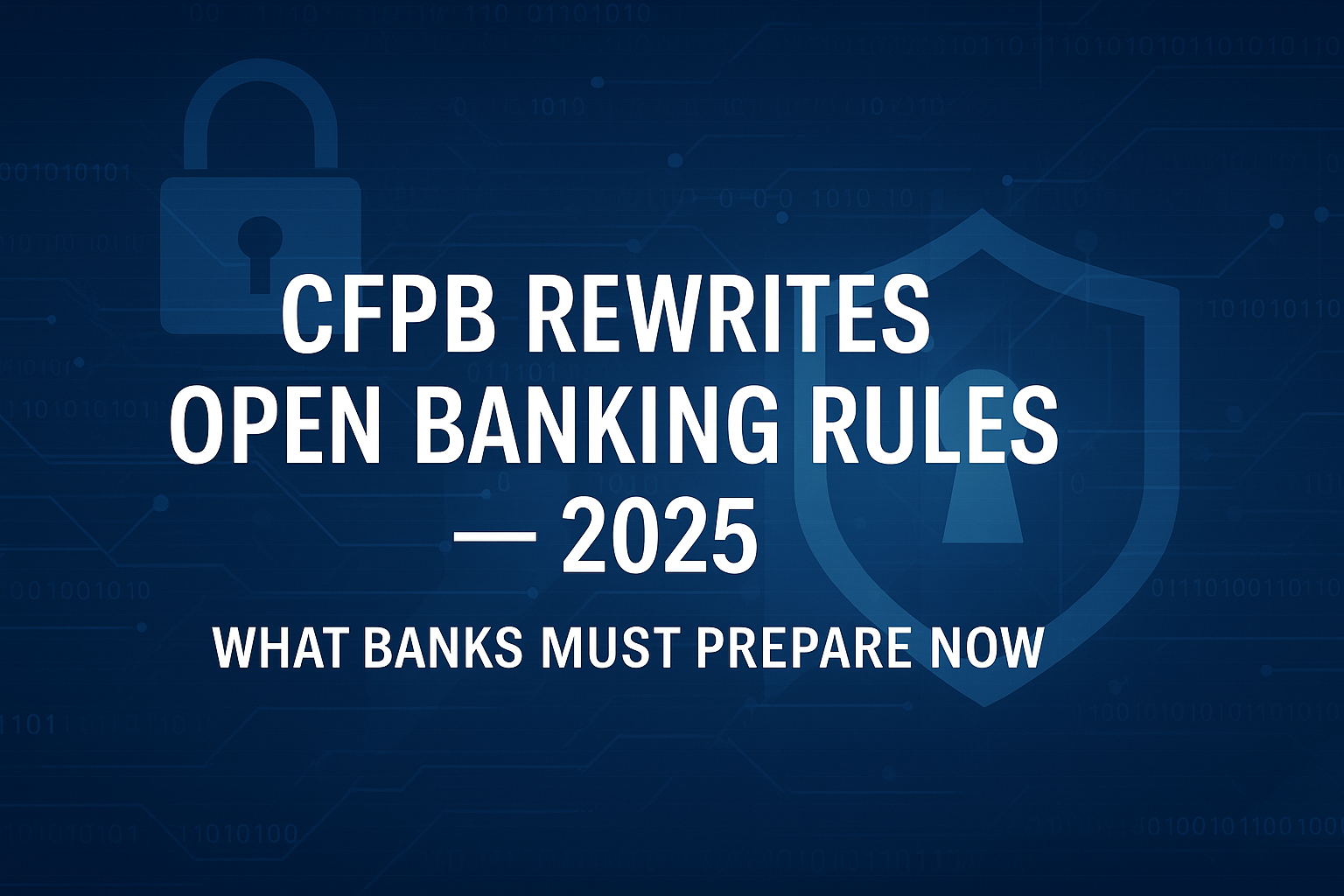CFPB Revises Open Banking Rules: What Banks Must Do
On August 21, 2025, the CFPB formally kicked off a do-over of its open banking regulations—specifically revisiting rules under Section 1033 of Dodd-Frank that govern consumer access to their own financial data. This move marks a pivotal shift from prior administration statements and signals that consumer data access, API interoperability, and fintech integration are back under regulatory consideration.
For banks, this means potential reopening of obligations, technology stress, and compliance risk—but also opportunity to lead in transparent, customer-centric digital services.
Why the CFPB Rule Shift Matters
- Regulatory reversal: The Trump administration had previously been aligned with industry efforts to roll back or pause open banking rules. This reversal indicates political winds shifting toward more consumer data rights.
- Fintech pressure & public scrutiny: The fintech community and public demand for data portability is driving regulatory momentum.
- Examination & compliance risk: Banks may again be subject to supervisory scrutiny around data sharing, cybersecurity of APIs, and consumer consent frameworks.
- Opportunity for differentiation: Institutions that proactively build secure, transparent data access frameworks can lead in trust and product innovation.
Key Issues in the Revised Rule
- API architecture & security
Expect demands for robust, standard APIs (REST, JSON) with strong authentication, encryption, and abuse controls. - Consumer consent & revocation
Rules may require granular opt-in/opt-out, time-limited permissions, and dynamic revocations. - Standardization & interoperability
Regulators may mandate standards (e.g. data schemas, versioning, error codes) to reduce fragmentation. - Liability & vendor oversight
Banks may be held liable for downstream misuse by fintech partners, amplifying third-party risk expectations. - Data minimization & privacy guardrails
Only necessary data should be shared; policies should limit scope and frequency of access. - Audit trail, logging & accountability
Banks will need detailed logs, monitoring, and incident response tied to data access operations.
Strategic Steps for Banks (Next 6–12 Months)
| Timeline | Action | Why It Matters |
|---|---|---|
| 0–3 months | Establish a cross-functional Open Banking Readiness Task Force | To monitor rule developments, assess internal gaps, and align stakeholders |
| 3–6 months | Conduct a gap analysis vs. proposed APIs, consent flows, logging requirements | Helps prioritize changes and show exam-readiness |
| 6–9 months | Begin redesigning APIs, consent modules, vendor contracts, and security architecture | Provides time to test, harden, and integrate before enforcement |
| 9–12 months | Launch pilot or sandbox data access services, monitor metrics, refine controls | Demonstrates operational readiness and gives empirical input |
| Ongoing | Monitor rulemaking (ANPR, NPR), submit comment letters, engage in standards bodies | To influence direction and stay ahead of compliance surprises |
Regulatory & Market Context in August 2025
The Gibson Dunn Monthly Bank Regulatory Report (Aug 2025) flagged the open banking restart alongside the fair banking exec order and other regulatory shifts.
The CFPB’s action reverses prior clearance to repeal or stall these rules and signals renewed federal attention to consumer data rights.
Meanwhile, banks are also pushing for national regulatory standards to override state-level “debanking” mandates, aligning with broader industry desires for uniform regulation.
How Saturn Partners Can Help
We help banks shift from reaction to leadership in data access and open banking. Our support includes:
- Technical architecture reviews (APIs, security, consent flows)
- Gap analysis vs. prospective standards
- Vendor oversight frameworks and contract templates
- Policy, audit trails, and exam narrative support
- Pilot design, product roadmap, and metrics dashboard
Want to get ahead of the open banking rewrite? Let’s map your roadmap together.

